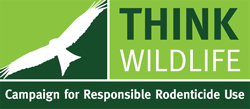Monitoring Programmes
Since 2011, monitoring for residual traces of rodenticides and other chemicals in tissues on non-target wildlife species in Ireland has been undertaken in the context of the RAPTOR Protocol. In the UK for many years scientists at what is now the Centre for Ecology and Hydrology have monitored residues of certain environmental pollutants in birds. This is called the Predatory Bird Monitoring Scheme (https://wiki.ceh.ac.uk/display/pbms/Home). The scheme is funded by several agencies, one of which is CRRU.
During the 1980s barn owls in the UK were found to carrying residues of some of the most commonly-used anticoagulant rodenticides. Most of the birds were apparently otherwise healthy and there was no evidence that the residual traces present, were having any adverse effects on the birds that carried them.
Nevertheless, as methods of analysis grew more sophisticated and the frequency of carcass collection was increased, it was found during the 1990s that up to 40% of barn owls carried traces of rodenticides. This indicated that at some time during their lives the birds had taken one or more rodents that had been treated with rodenticides.
More recently even more sophisticated and sensitive methods of chemical analysis have been used which can detect extremely low level residues. The new data available from the PBMS, supplemented by data on buzzards from SASA, show that at some time in their lives a high proportion of many important species of birds of prey have been exposed to rodenticides.
Source of Anticoagulant Residues Found
Although owls and kestrels may occasionally take rats and house mice for food, analysis of their food preferences shows that in the UK they feed mainly on non-target small mammals, such as field mice and voles. It is difficult to explain the extent of exposure of owls and kestrels to rodenticides by their consumption of contaminated target rodents. It is likely that they are indirectly exposed when non-target rodents take rodenticide baits during application of rodenticides.
This information on rodenticide residues in owls must be seen in the context of the fact that the most common documented cause of death in barn owls is collision with road traffic.
Recognition of the level of exposure of barn owls to anticoagulants resulted in the search for residues in other wildlife species. It has been shown that populations of several other species also contain residues of anticoagulants, including red kites, kestrels, buzzards, polecats, stoats and weasels(Figure 3).
It has yet to be established the effect on population dynamics, if any, exposure to non-lethal residual traces of rodenticides may have in these species.
Recent Research
In Ireland, research carried out by BirdWatch Ireland, in collaboration with the Centre for Ecology and Hydrology, UK, and University College Cork has shown that barn owls are extensively contaminated with anticoagulants like their UK counterparts. Several small mammal species, such as the field vole and bank vole, which are important prey of barn owls in the UK, are either absent from Ireland or have limited distribution. As a consequence, Irish barn owls are more likely to feed on house mice and Norway rats that are the target of control programmes based on anticoagulants. Although a similar proportion of barn owls in Ireland were found to carry detectable residual traces of second generation anticoagulant rodenticides (88%) as in the UK, available evidence suggests that the levels present were considerably higher in Irish barn owls.
Other Sources of Contamination
Recent research published by SASA has brought to light another area of concern. For the first time extensive studies have been conducted on sparrowhawks and peregrine falcons. In spite of these species feeding mainly on small birds taken on the wing, 46% of sparrowhawks and 35% of peregrines contained residues of rodenticides. This demonstrates that the birds that are their prey are being accidentally exposed to these chemicals.
A recent study in the Netherlands showed that bait stations were visited by more non-target species that by target species, and that slugs and snails accounted for a third of the visits while birds (jackdaw, magpie, robin, dunnock, carrier pidgeon, moorhen, blackbird, homester, ringdove, and great tit) accounted for 20 % of bait station visits. Thus it seems that birds taken by by sparrowhawks, peregrine falcons and other predators may be a significant source of the anticoagulant residues found in their tissues.
Data generated in accordance with the Irish RAPTOR protocol confirmed the presence of traces of rodenticides in peregrine falcons. Although non-raptor species are generally not tested under the protocol, traces of rodenticides were also been found in otters.
Once again, there is no evidence that populations of these species are in any immediate danger as a result of such non-lethal exposure.
Population Effects
A UK survey has shown that polecat numbers have increased dramatically during recent years and this species is now present in parts of the UK where it has not been seen for more than a century.
Surveys conducted by the British Trust for Ornithology have similarly shown that over the last 10-15 years populations of some of the species most exposed to rodenticides, including barn owls, red kites and common buzzards, have actually increased significantly. These increases are as a result of the release of captive-bred birds and other important conservation efforts such as the provision of nest boxes and a concerted effort to prevent persecution by illegal shooting and poisoning.
In Ireland the buzzard has made a great recovery and is now breeding in almost every county, while the re-introduced red kite population is also doing well, but the barn owl has suffered significant decline in recent years.
However, the widespread distribution of these low-level residues of anticoagulants in wildlife is of concern and we must do all we can to prevent it.
